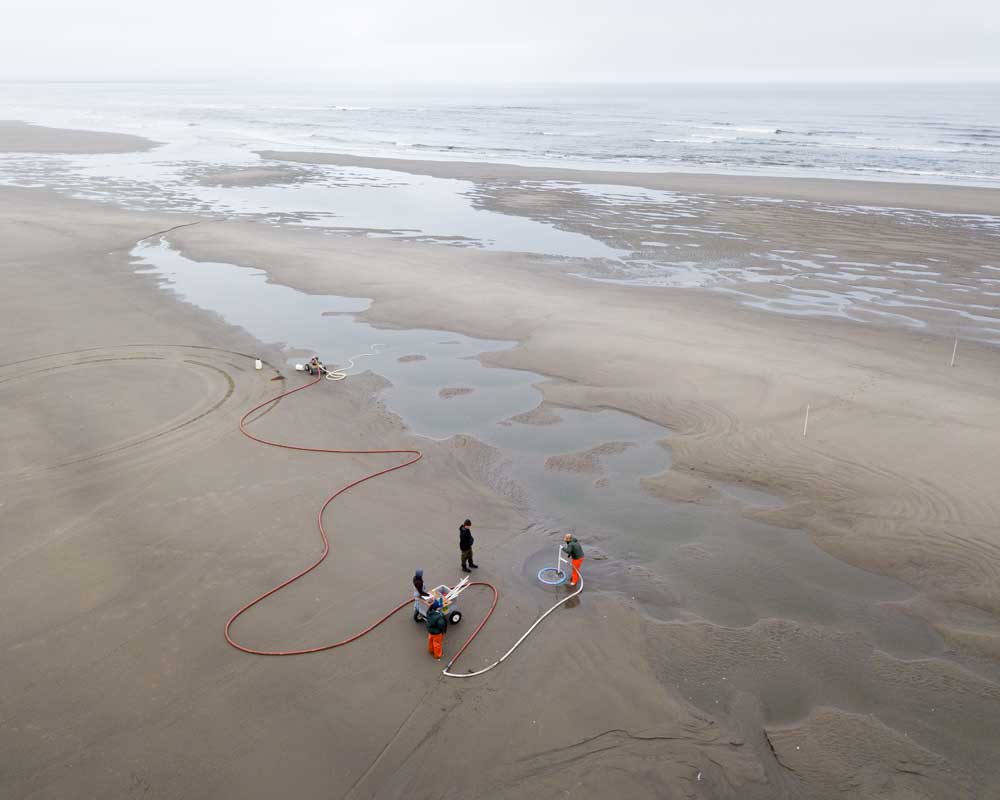Diggers could see an abundance of razor clams
Published 12:15 am Wednesday, September 29, 2021

- State biologists sample razor clams along the Clatsop beaches area in July.
It’s been nearly a year since someone could walk from a parking lot in Fort Stevens State Park to the wet sand by the South Jetty and shove a clam gun in a razor clam’s face.
But beginning Friday, people will once again be able to bring their tool of choice — be it shovel, clam gun, or their own two hands — to Oregon’s most popular clamming beach to dig their daily limit.
The Clatsop beaches area shut down last year after marine toxin levels spiked. Domoic acid levels remained high into 2021 and an annual summer conservation closure period followed.
Now, toxin levels have dipped and ocean conditions were ideal for young and more mature clams. Razor clam abundance is the highest it has been since 2004, when the state first began assessing the population, according to fishery managers.
It’s welcome news to clammers. The Clatsop beaches area, an 18-mile stretch of beach between Seaside and the South Jetty near the Columbia River, is home to productive clam beds. It is where the bulk of Oregon’s razor clams are harvested each season.
There is a tremendous amount of clams out on the beach, said Matt Hunter, the shellfish project leader with the Oregon Department of Fish and Wildlife’s marine resources program.
Abundance is high in Washington state, as well — so high, in fact, that fishery managers there increased the daily bag limit from the first 15 clams dug to the first 20. In Oregon, the daily bag limit continues to be the first 15 clams dug.
Washington enforcement officials have written a number of citations for people who went over the limit, but Dan Ayres, the coastal shellfish manager for the Washington Department of Fish and Wildlife, said he has had other people tell him “20 clams was too many and they just took what they could eat.”
The department has only changed bag limits once before in Ayres’ long time with the state.
Several years ago, they allowed people to keep up to 25 clams in Long Beach. A preseason assessment predicted the beach would be full of clams, but the area hadn’t been open for months because of issues with domoic acid. When people finally began to dig in the spring, people struggled to dig even the usual 15. Many clams hadn’t survived.
That won’t be a problem this year, Ayres said.
But domoic acid remains a threat. Levels may not be at unsafe levels right now, but blooms can occur in the early fall and fishery managers saw levels fluctuate throughout the summer.
In recent years, domoic acid has not only shut down razor clam digs, it has impacted the Dungeness crab fishery.
Recent stormy weather likely spelled good news for the start of the razor clam season. Ayres said the wind and rain appears to have cleared up the water.
“It’s looking better now than it did before,” he said.
In Oregon, Hunter will be looking at weekly water samples taken from up and down the coast, keeping an eye on pseudo-nitzschia in the water. The planktonic diatom can produce domoic acid and is becoming a familiar, near-constant presence in the water column, Hunter said.
“I think this is going to be our new normal with changing oceans and a changing climate,” he said.
If the two states don’t see any harmful algal blooms in the early fall, it is rare for them to experience any issues through the winter. They will start worrying about domoic acid again in the spring.





